DNEG’s VFX Supervisor Joel Green talks about the team’s work on ‘No Time to Die’, stretching from large-scale environments to a futuristic glider to dramatic, true 007-style explosions.
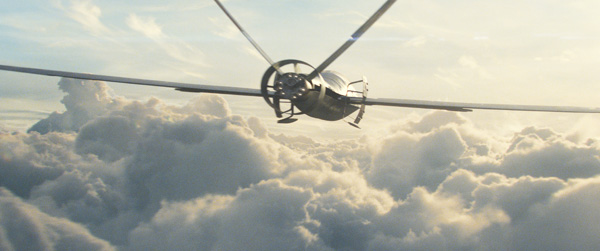
For the James Bond finale ‘No Time to Die’, DNEG completed over 500 shots across 30 sequences, building effects from large-scale environments to a futuristic glider to dramatic, true 007-style explosions. Working with Production VFX Supervisor Charlie Noble, DNEG started on the project in November 2018 and finished in February 2020, just before the pandemic lockdowns took hold in earnest. Digital Media World talked to DNEG’s VFX Supervisor Joel Green about the team’s work in several of their sequences.
The production involved several different locations, and Joel had the opportunity to travel out to some of them to supervise scanning, scouting and VFX photography – namely, Cuba and the Faroe Islands of Denmark.
The night sequence in which Bond and his friend Felix become trapped in a trawler that begins to sink after an on-board explosion was shot in Jamaica. The live action was shot on a set built for the boat deck and interior, while DNEG was responsible for the exterior. The edit would cut back and forth between the two. Previs for the sequence had been created at Proof with Charlie Noble, working with the Director Cary Fukunaga and the editor.
Sinking Trawler
The boat was fully scanned, including texture capture, by a team from LIDAR Lounge to support the 3D exterior build. The FX team, led by FX Supervisor Adrian Thompson, worked on the water simulations needed for both the above- and below-surface shots.
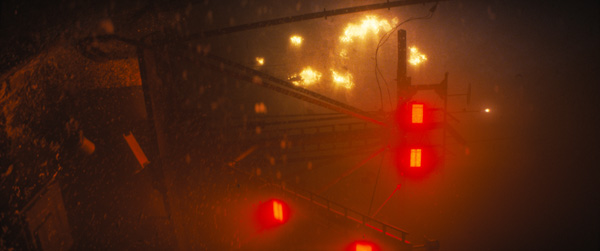
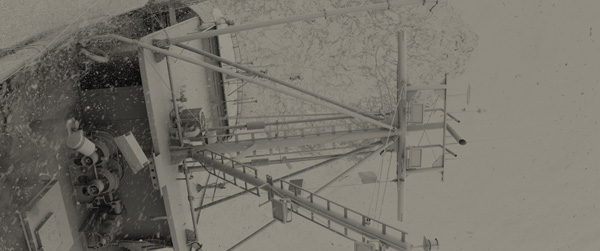
Joel said, “Guiding the simulations was a large amount of research into what happens to a boat of this type as it sinks, and its effect on the surrounding water, bubbles and debris. Oddly, but fortunately, quite a lot of video about this was available online, which I cut together into a reel of looks for the team to refer to. Adrian and FX TD Andy Guest could choose the ones that worked best with the story to help design water simulations in Houdini.”
Associated effects for the sequence included oil burning on the surface of the water, calling for a CG oil simulation and CG fire. For the explosion that viewers see on board the boat, the SFX team set off a real explosion for the plates, which DNEG enhanced digitally.
An interesting part of this scene was the underwater lighting, handled in Clarisse. The trawler’s exterior was fitted with red lights, which in reality would have soon faded to a dull light at a depth not far below the surface. But because the sequence would have lost much of its visual urgency without the red colour, our Compositor John Olone created a special underwater look for the red lights in compositing that had a realistic feel, but in fact was not real.”
Taking Flight
The glider we see with Bond and Nomi on board approaching the nefarious island headquarters of the villain Lyutsifer Safin was a static prop shot on a gimbal with the actors inside. This prop was scanned, rebuilt by DNEG in CG with its elegant folding wings, and animated to appear in the flying shots. Its look in flight was art directed, which is seen as it begins its journey at a very high altitude, released from a C-17 aircraft carrier, and continues over the sea and eventually to Safin’s base.
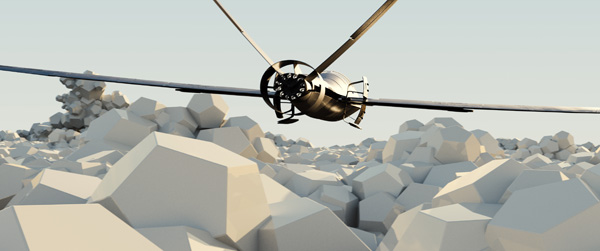
Joel said, “The release from the back of the C-17, launching the glider, was a special effort. While the two actors sat in the cockpit, they were surrounded by LED screens to project the correct lighting onto them, matching the lights in the interior of the C-17 bay. Then, as the glider was drawn out tail first and swings down, their POV of the interior rushing past them was extended digitally as part of the CG environment.”
As the glider travels over the sea, it passes through a beautiful cloudscape that a team at DNEG created over the island, led by Environment TD Jack O'Kersey and Ioanna Mailli. Starting with blocked out cloud shapes for approval, they created fully volumetric clouds based on VDB generation in Houdini, close to camera. Then the background was filled in with more clouds using digital matte paintings. Apart from beauty, the cloudscape built up the stealth factor of this 007 story.
Island Headquarters
After descending from the clouds, the glider slides below the surface of the water to emerge in an underwater hangar. DNEG built this interior to match the concept art and the physical set build of concrete submarine bays in the foreground, and extended these into the background. Because Safin’s headquarters was located in a World War 2 military base, this interior has a grim, abandoned look designed by CG Build Supervisor James Benson, who oversaw the asset build work for the film, including the C-17 carrier.

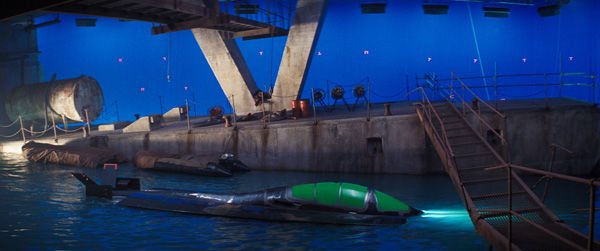
The island setting was a custom blend of a real location – Kalsoy in the Faroe Islands – and CG alterations to match the film’s story and action. Joel went out to help supervise the helicopter and boat photography and a major scanning effort to capture the island. LIDAR Lounge, working with DFX supervisor Dan Pastore, scanned and photographed Kalsoy, which is a long, thin island with steep cliffs along the western edge. This data and imagery was used to support re-building the whole island, including the coastline, in order to add infrastructure matching the story points. They manipulated certain aspects of the geography and shortened the island.
The concepts for the location were extensive and needed to visualise the story behind Safin’s nanobot propagation activity there – a Zen garden, poison algae cultivation, the factory, laboratory, silos and port infrastructure, and mixed use buildings. In some cases they could patch in what already existed in the photography and scans, but at times they needed to produce all-digital shots.
Sunset Explosions
The dramatic scenes featuring Bond as he climbs the factory tower as the end approaches were also DNEG’s work. “The sequence was based as far as possible on the 2nd unit plates, which needed detailed attention to the sunset lighting,” Joel said. “Linus Sandgren, the director of photography, had chosen and graded the ones he wanted to use from a large number of plates, and the team aimed to match the distinctive sunset look. The elements of Bond himself had been shot on a green screen stage.”
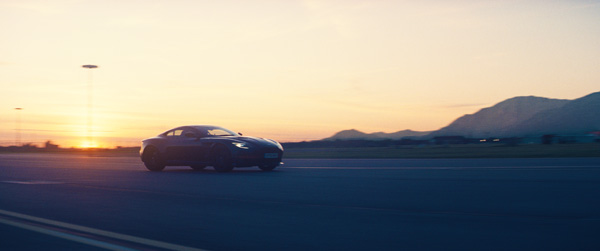
Framestore and ILM had looked after the interiors at locations on the island but when Bond climbs up into the tower to trigger the mass destruction of the factory and laboratory, DNEG took over and then worked on the massive explosions that follow.
Bunker Buster
“Our work was based on huge practical explosions that SFX Supervisor Chris Corbould had set up on Salisbury Plain in England, using bunker buster munitions of a type designed for deep underground targets like bunkers,” said Joel. “Some of those resulting explosions could be used as elements, but served mainly as a guide for the desired scale and look of the CG elements we would need to create in order to communicate the realism and magnitude of the explosions on the island.
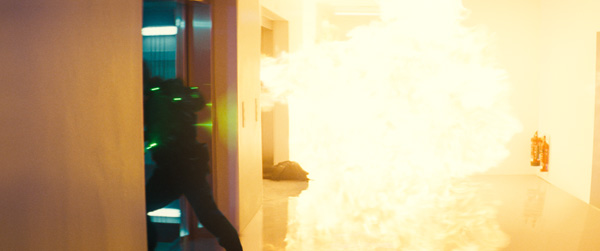
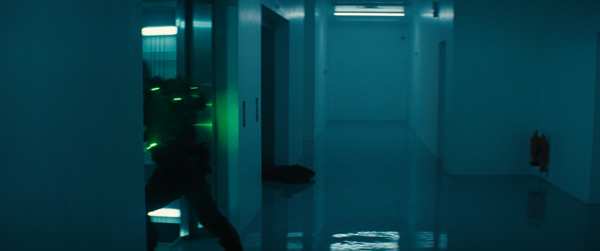
“The director’s vision was for the destruction to occur in three main explosive hits before Bond is engulfed in the incendiary fire and the camera cuts to a wide shot. Legibility within the explosions was important to convey the message that the island was obliterated, the laboratory destroyed and nothing could have survived.”
Designing the Houdini simulations involved attention to timing, scale and impact. The team also had to be conscious of how they would look in shots looking out across the silos. The speed of the smoke had to be carefully defined to sell impact as well as drama. At the same time, Compositing Supervisor David Scott and his team continued to control the lighting and look of the sunset to match the DP’s graded plates. www.dneg.com


















